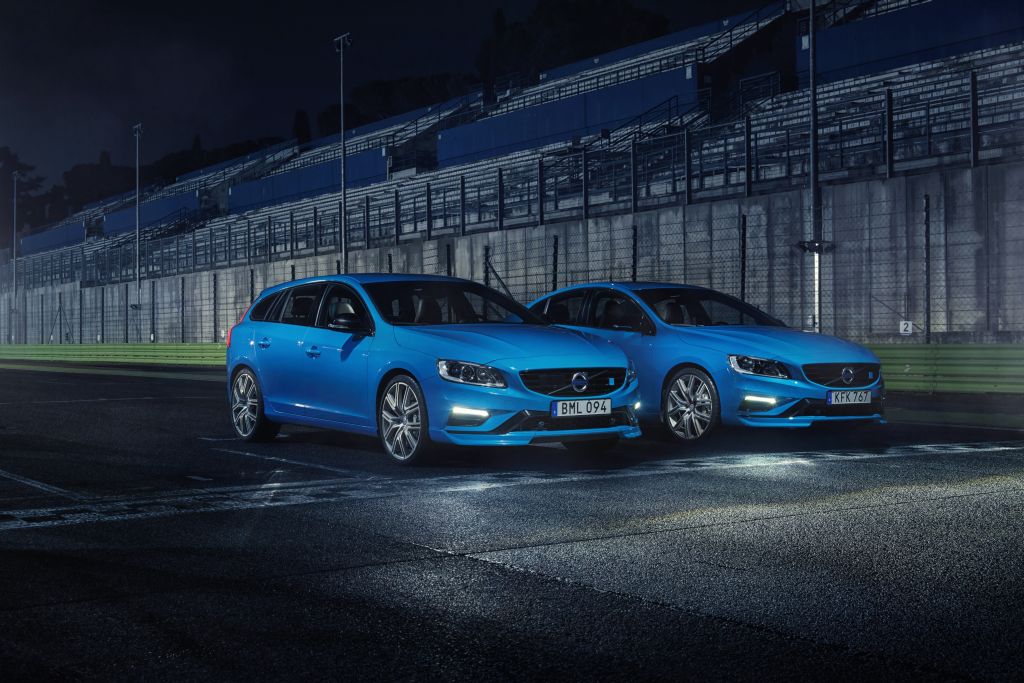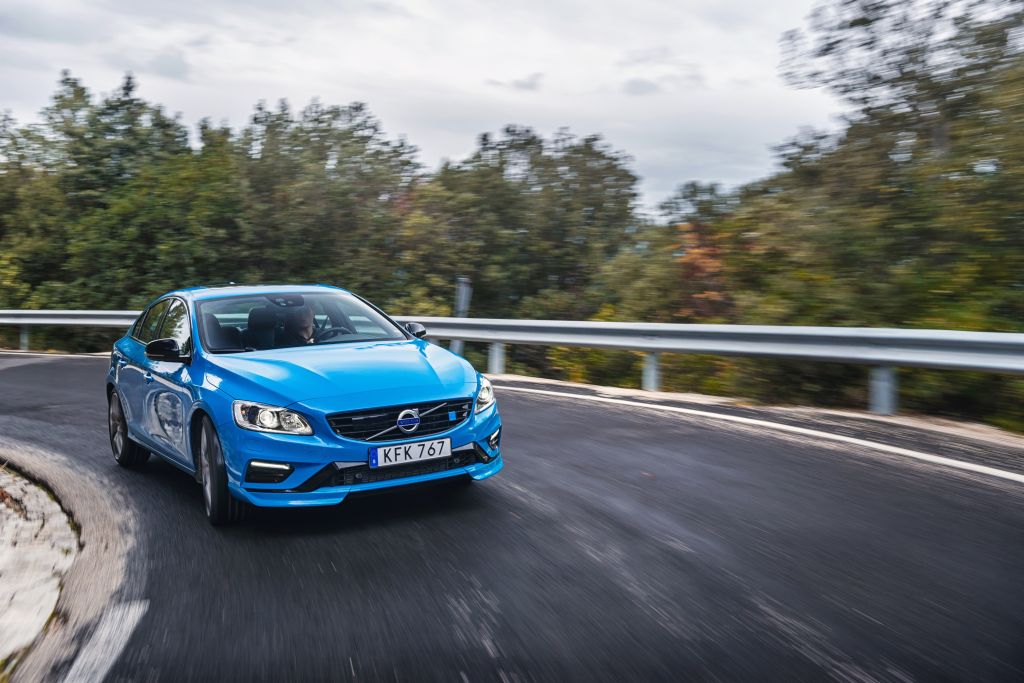With 270kW output the V60 & S60 Polestar are VERY QUICK
VOLVO has killed off six-cylinder power for its S60 sedan and V60 wagon Polestar twins, but the new 2.0-litre four-cylinder replacement that lands in Australia later this year has managed to find an extra 13kW over the outgoing 3.0-litre models.
With the downsize, the new 270kW V60 and S60 Polestar has dropped 30Nm of torque, but thanks to a weight loss of 44kg the S60 can accelerate from zero to 100km/h two tenths of a second faster, with the dash completed in 4.7s – faster than any Volvo before it.
The wagon requires a little longer to get to the milestone 100km/h at 4.8s, while top speed in both cases is unchanged at 250km/h.
Its Drive-E petrol engine is similar in construction to the turbocharged and supercharged 2.0-litre unit under the bonnet of the V60 and S60 T6, but for the performance flagship Volvo put the Polestar through the tuning shop.
To wring the full 270kW and 470Nm out of just 2.0 litres, Volvo’s engineers fitted a larger turbo and supercharger, new conrods, camshafts and a modified air intake, while the injection pump rate was upgraded to deliver sufficient fuel.
With its new pumped-up performance, the Polestar powerplant snaps at the heels of Mercedes-AMG’s A45 engine, which it claims to be the most powerful production four-cylinder with 280kW.
Volvo has previously confirmed that Polestar variants will get hybrid electric assistance at some point, potentially borrowing some of the T8 turbo petrol-electric powertrain from the XC90, but for now the V60 and S60 versions are sticking with combustion only.
Production is being ramped up from 750 vehicles per year to 1500 to meet the growing demand from new markets.
Like the previous version, the Polestar sends its grunt to the ground via a BorgWarner four-wheel drive system and eight speed Geartronic automatic transmission.
S60 Polestar sedans weigh in at 1751kg, while the V60 wagon version has a slight weight penalty rising to 1796kg thanks to the added metal in its more generous boot.
The switch to four-cylinder power has cut fuel consumption and CO2 emissions down to 7.8 litres per 100km and 179g/km respectively. Those figures rise to 8.1L/100km and 186g/km for the heavier wagon.
The updated Polestar rolls on larger wheels than the V6 version, with 20-inch lightweight rims standard all round, wearing 245/35 Michelin Pilot Sport rubber and housing new 371mm slotted front brake discs paired with six-piston Brembo callipers.
For the rest of the features it is business as usual with all options except a sunroof included as standard on the Polestar range-toppers. Adjustable Ohlins dampers with modified top-mounts, front carbon-fibre strut brace, modified electric power steering, stiffened springs and tie blade bushes are all standard.
Its Polestar rear spoiler, diffuser and front splitter are not just for show and have beneficial aerodynamic effect, while a choice of Rebel Blue, Onyx Black, Bright Silver or Ice White paint options are standard fare.
Interiors feature sports seats upholstered in black nubuck rough leather with contrasting blue stitching which extends to the door trims and leather steering wheel, while the dash and centre console are adorned in carbon-fibre.
By any measure these cars are seriously quick.
Volvo stated that “The cars are very composed through corners, with lots of traction and enough low-end torque to make them very, very quick.”
“They combine Polestar’s 20 years of racing pedigree with Volvo’s inherent pragmatism and engineering heritage. The end result is two very quick but functional performance cars that can be driven on normal Australian roads every day of the year.”

By DANIEL GARDNER – GoAuto

